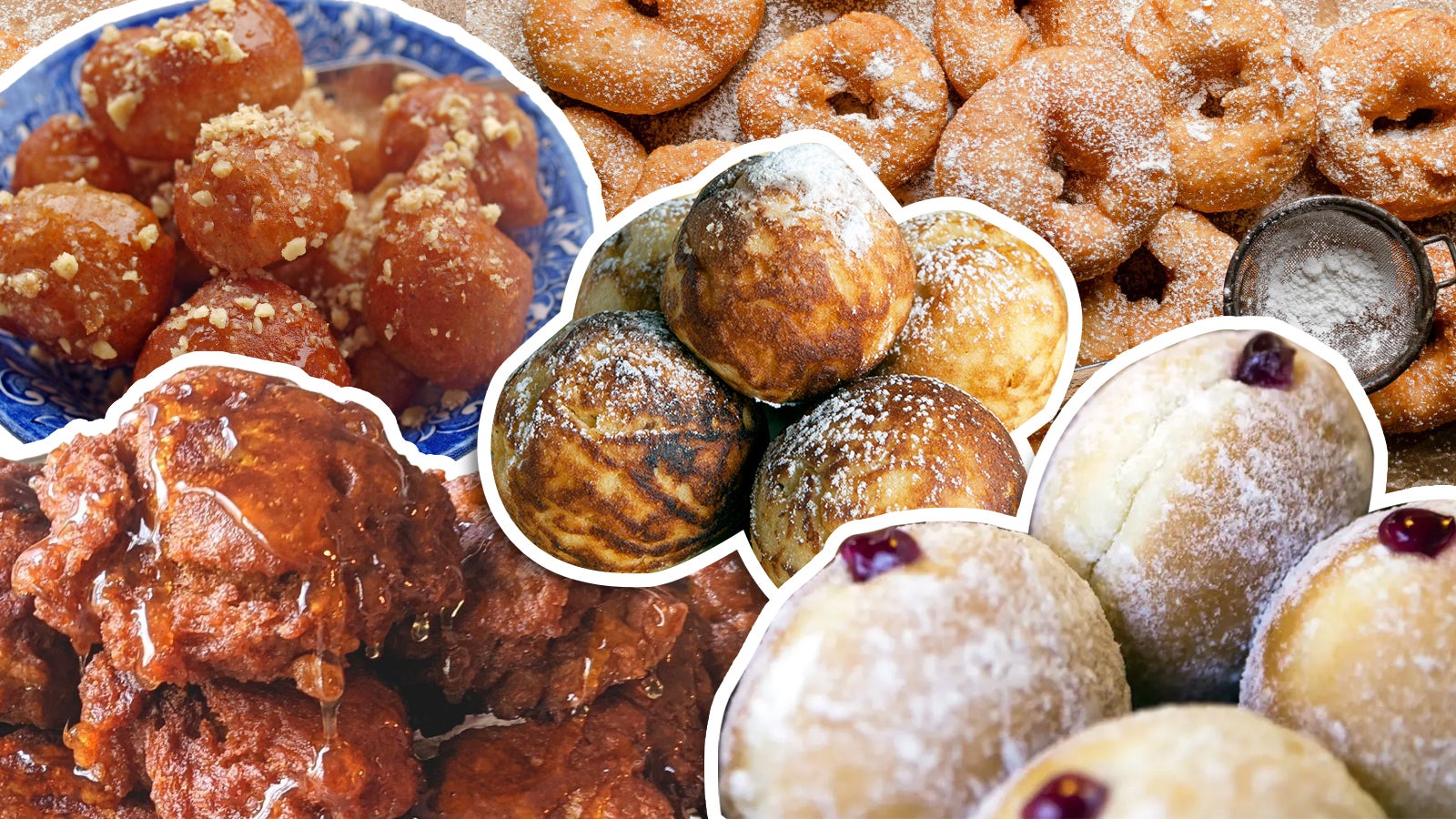Jews and donuts are inextricably linked. Not only do we love to eat them on Hanukkah, but we’ve played a pivotal role in popularizing the fluffy treat. The creator of the donut machine was Jewish, the founder of Dunkin’ Donuts was Jewish, and Jews from everywhere in the world have done their part to concoct new types of donuts and unique flavors. As we near the holiday season, it’s the perfect time to commemorate the Jewish donuts that made their mark on the world.
1. Loukoumades
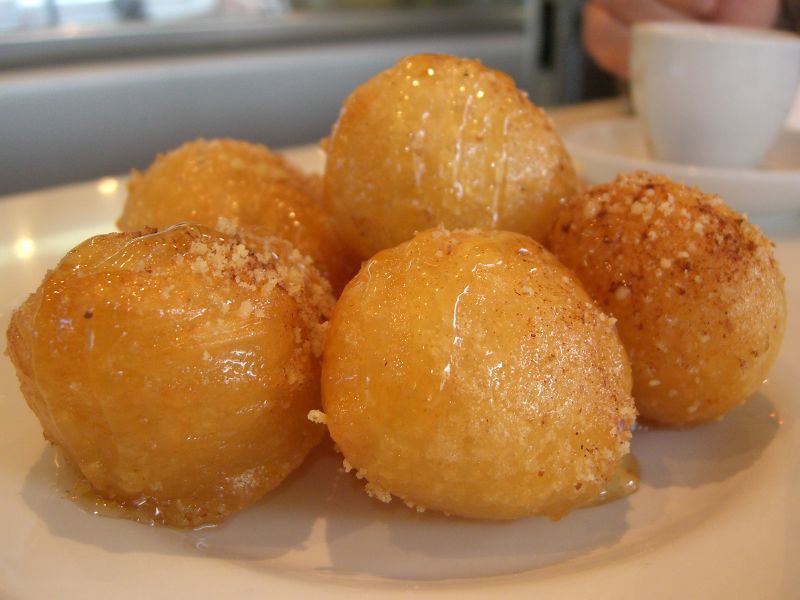
These small fried dough balls are technically the first donuts in history. In ancient Greece, they were referred to as “honey tokens,” and they were one of the original awards given to champions of the Olympics all the way back in 776 B.C.
According to an urban legend from Cyprus, they were the last line of defense in a mythical battle and were thrown from houses to ward off mischievous goblins. However, Greek Jews would serve these at Hanukkah.
2. Sufganiyot
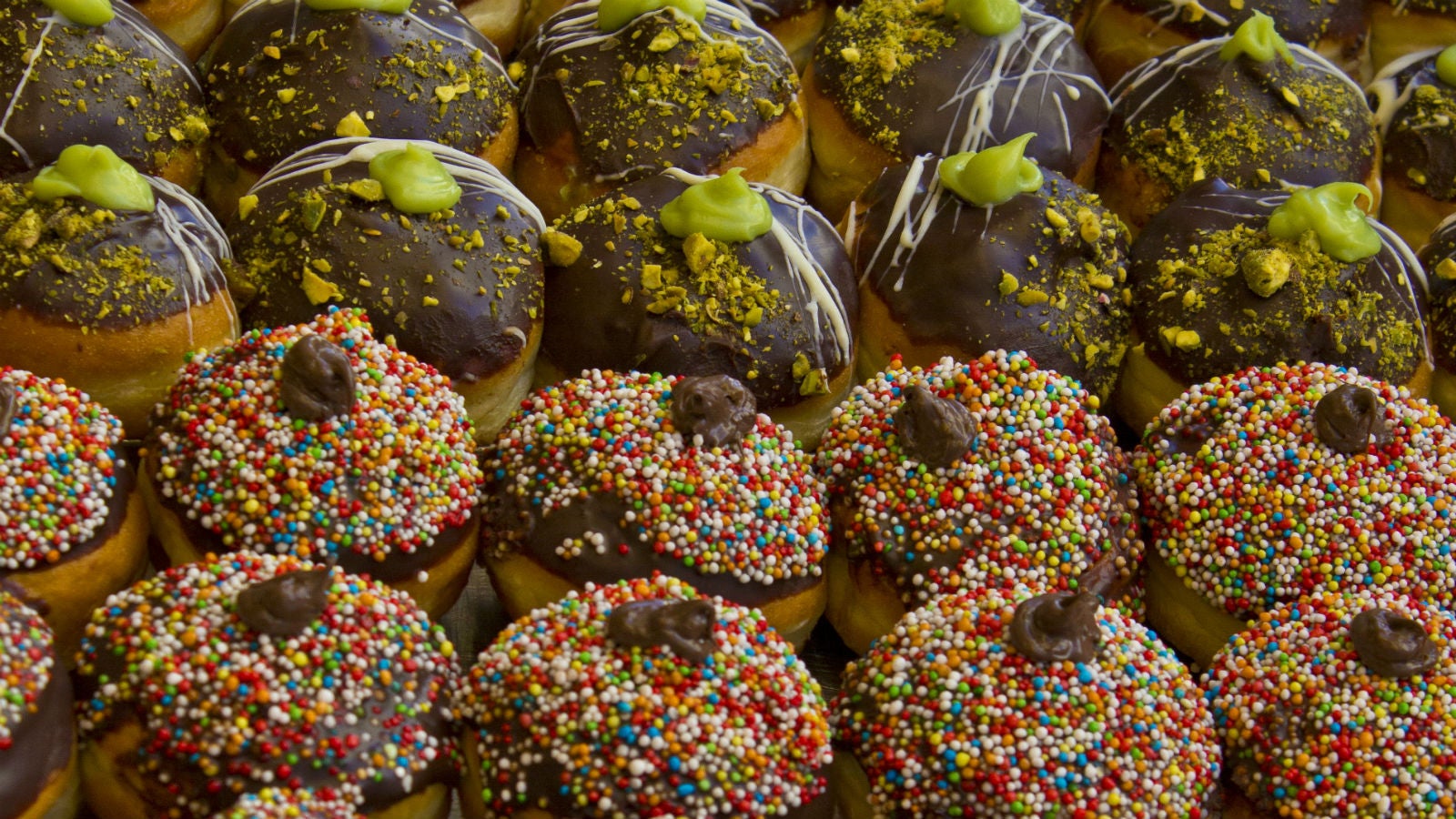
The classic Israeli jelly-filled sufganiyah is one of the most memorable bites of the holiday season. Sufganiyah, literally “spongy donut,” was brought to Israel with the first Aliyah (immigration) from Poland. The OG sufganiyah was made from two circles of dough surrounding a jelly filling, stuck together and fried in one piece.
The Nosher celebrates the traditions and recipes that have brought Jews together for centuries. Donate today to keep The Nosher's stories and recipes accessible to all.
Now, there’s not a home in Israel where sufganiyot don’t make an appearance. Israelis enjoy an astounding 20 million sufganiyot per year, and the Israel army alone is supplied over one million.
3. Fánk
Fánk is a donut that originated in the kitchens of Hungarian Jews looking to commemorate Hanukkah with a tasty fried dessert. What makes fánk unique is the addition of vodka or brandy to the dough. The result is that the oil cannot penetrate the dough, leaving the donuts extra fluffy and not greasy. In Hungary, these light and airy dough balls are topped with tangy apricot jam.
4. Bimuelos
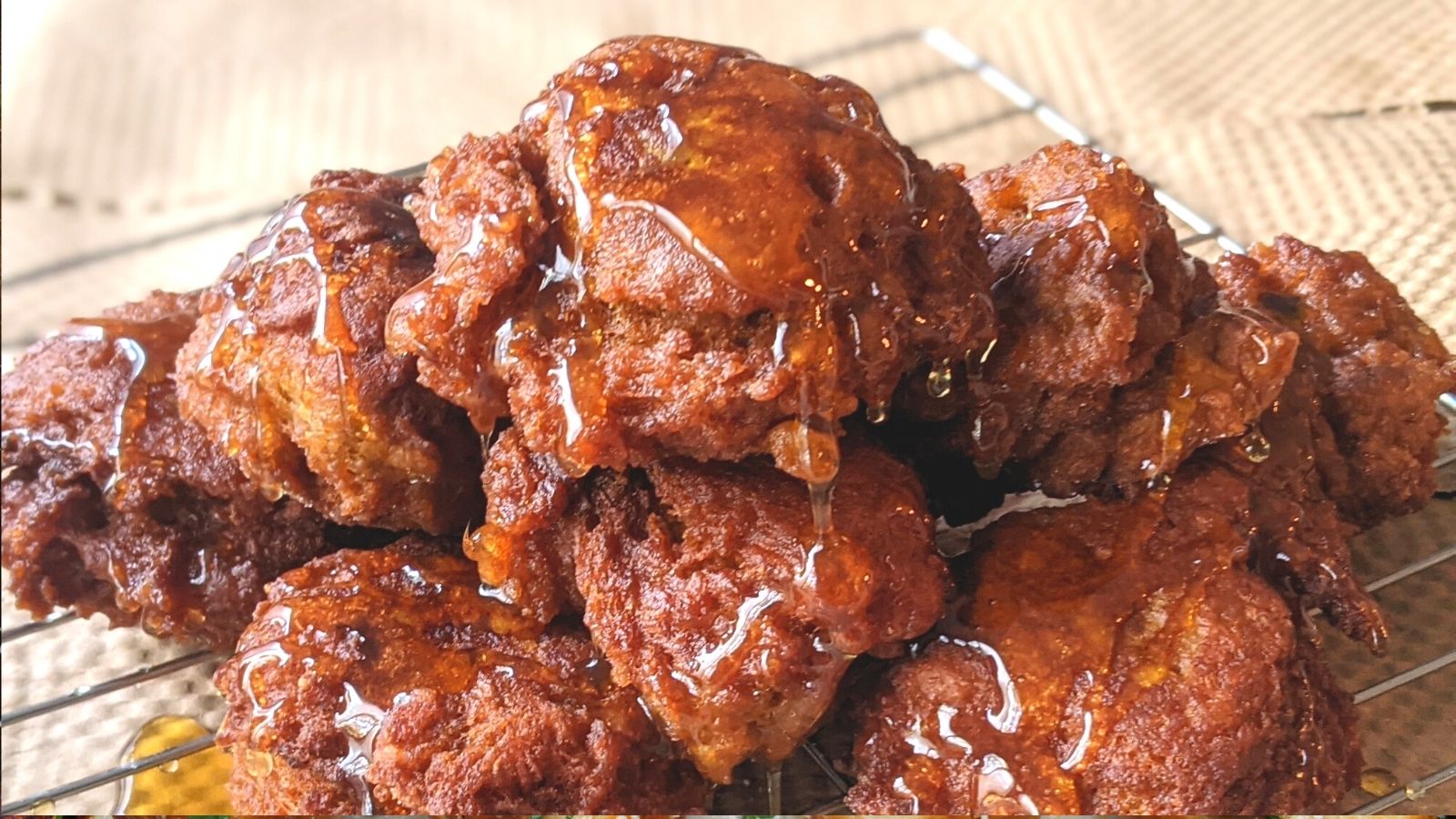
Deriving from the Spanish word for “lumps,” bimuelos categorized all sorts of fried dough fritters in Spain. Rather than aiming for a round shape like the donuts we’re used to, they go for an asymmetrical Rorschach shape. Bimuelos are typically flavored with anise or pumpkin, then fried and dusted with powdered sugar.
In the Ladino translation of the Bible, “bimuelos” is the translation of manna, and Sephardic households have been delighting in these dough puffs for generations. However, these delicious desserts aren’t only eaten on Hanukkah. For Passover, special bimuelos are made with matzah meal and are commonly served with arrope (raisin syrup), dulce (fruit preserves), a sprinkling of sugar or a dollop of yogurt.
5. Sfenj
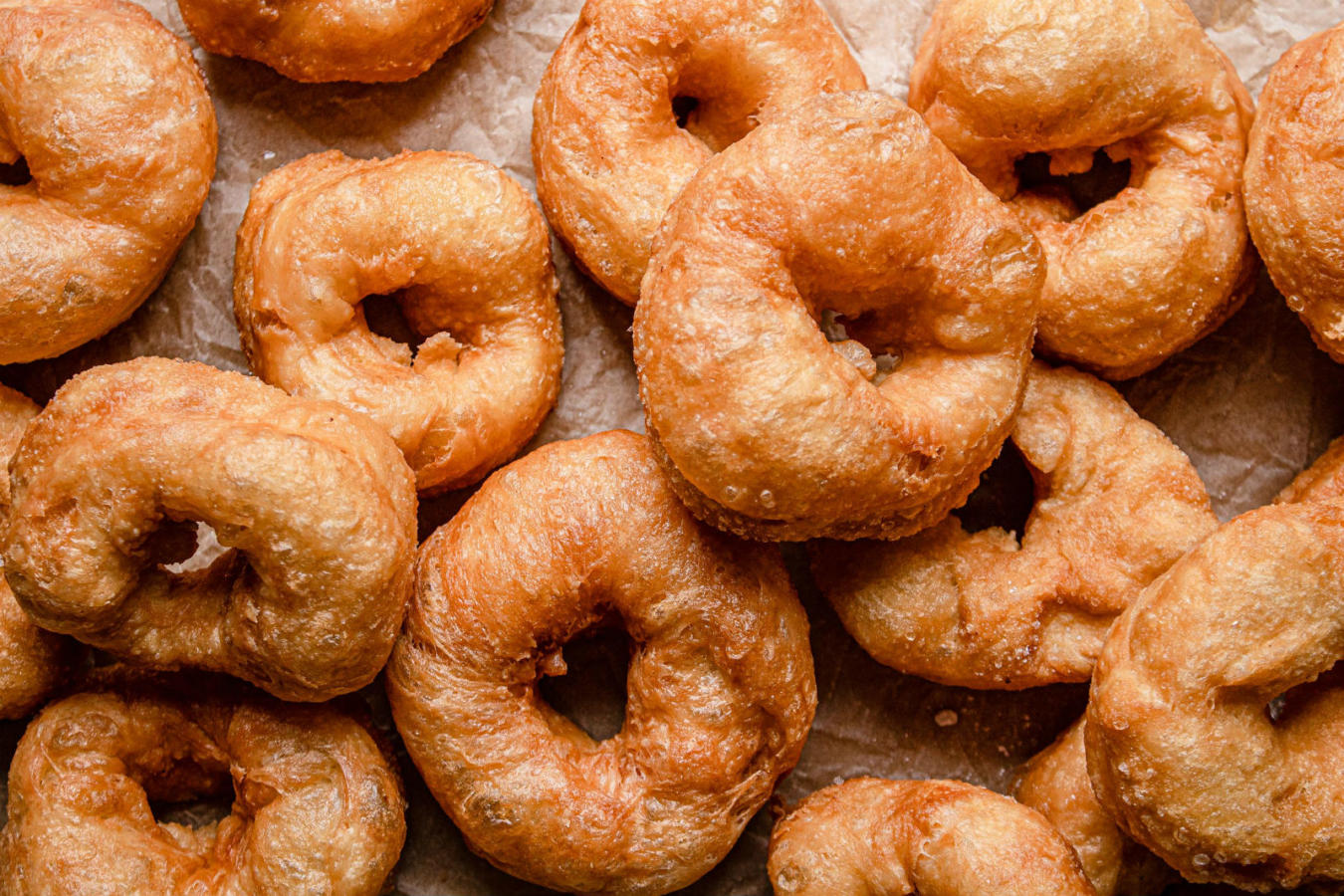
Sfenj are Moroccan Jewry’s answer to bimuelos. What makes these so special is how simple these fritters are. Sfenj don’t include any milk, eggs or fat, so for poor Jews in the Maghreb, these were perfect for saving money and time. Typically, they are doused in syrup and served alongside hot mint tea. In Arab communities, Jews were appointed as quality control inspectors for donut shops because Jews only eat cakes and fritters cooked in oil, while Muslims typically ate donuts cooked in butter. (I wouldn’t mind that job at all.)
While bimuelos would typically be topped with powdered sugar, the Sephardic Jews that fled from the Spanish Inquisition to Arab countries adopted the Middle Eastern tradition of glazing sfenj instead.
6. Ebelskivers
Ebelskivers are Danish fritters that came about when a band of Vikings were hungry after a difficult battle. When they returned to their ship, they were craving homemade pancakes, but since they had no regular pans, they used their shields or helmets to fry the batter, resulting in a spherical cake. The original dish used apples in the batter to add sweetness, but now any filling goes. These fritters are normally served at Christmas time, and were adopted by the small Danish Jewish community for Hanukkah.
7 and 8. Italian Donuts
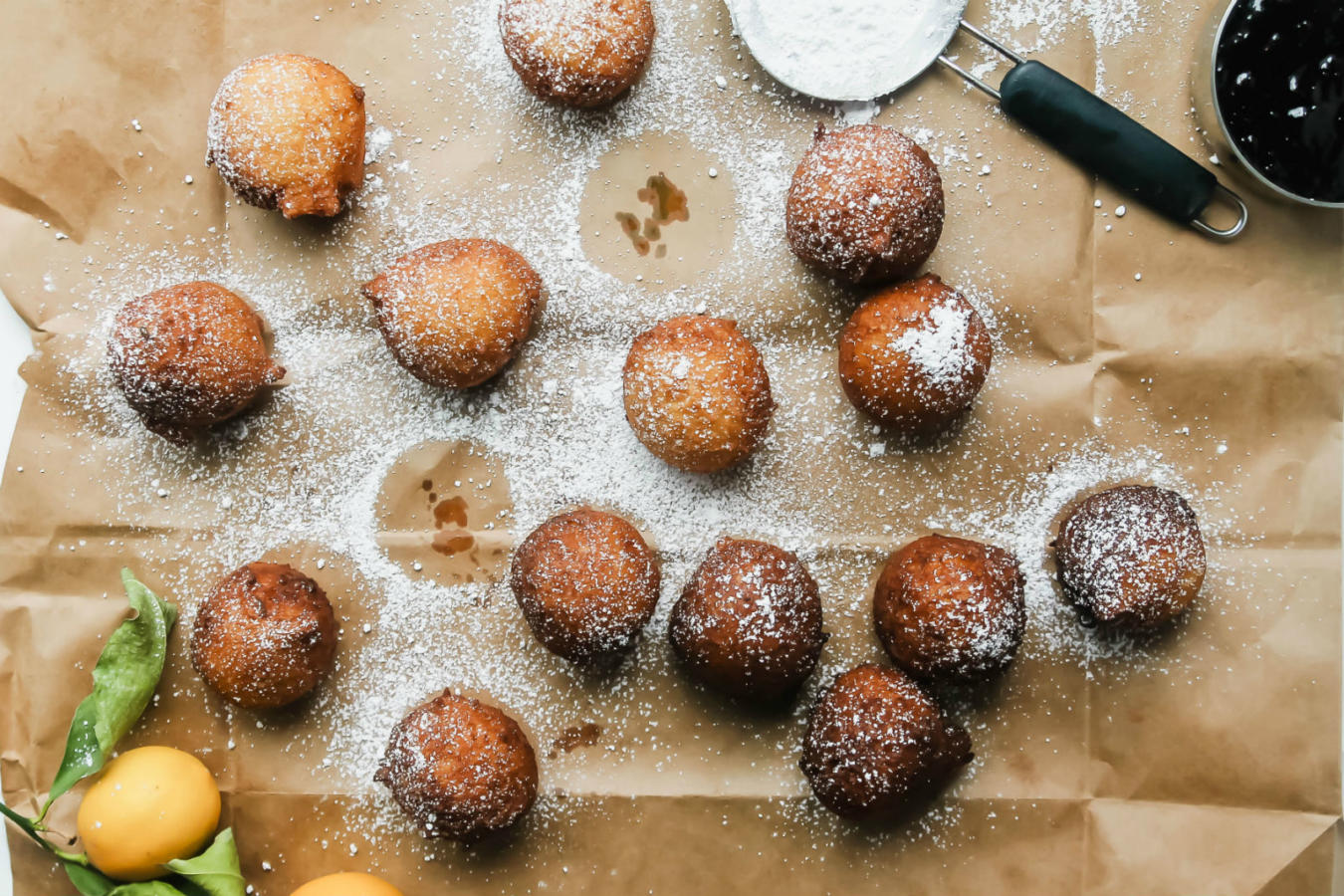
Italian Jews have many decadent contributions to the global collection of Hanukkah donuts. Frittelle di riso, otherwise known as Italian rice fritters, are like sweet arancini. A cross between a latke and a doughnut, they’re crispy on the outside and soft on the inside. Frittole dolci, are cinnamon-raisin donuts relished by Jews and non-Jews alike during winter festivities.
Down in Sicily, sfinci (ricotta donuts) are a fixture of holiday celebrations. Crispy fried donuts filled with ricotta, dusted with powdered sugar and topped with a maraschino cherry is how Sicilian Christians celebrate Saint Joseph’s Day, and how Sicilian Jews celebrate the festival of light.

